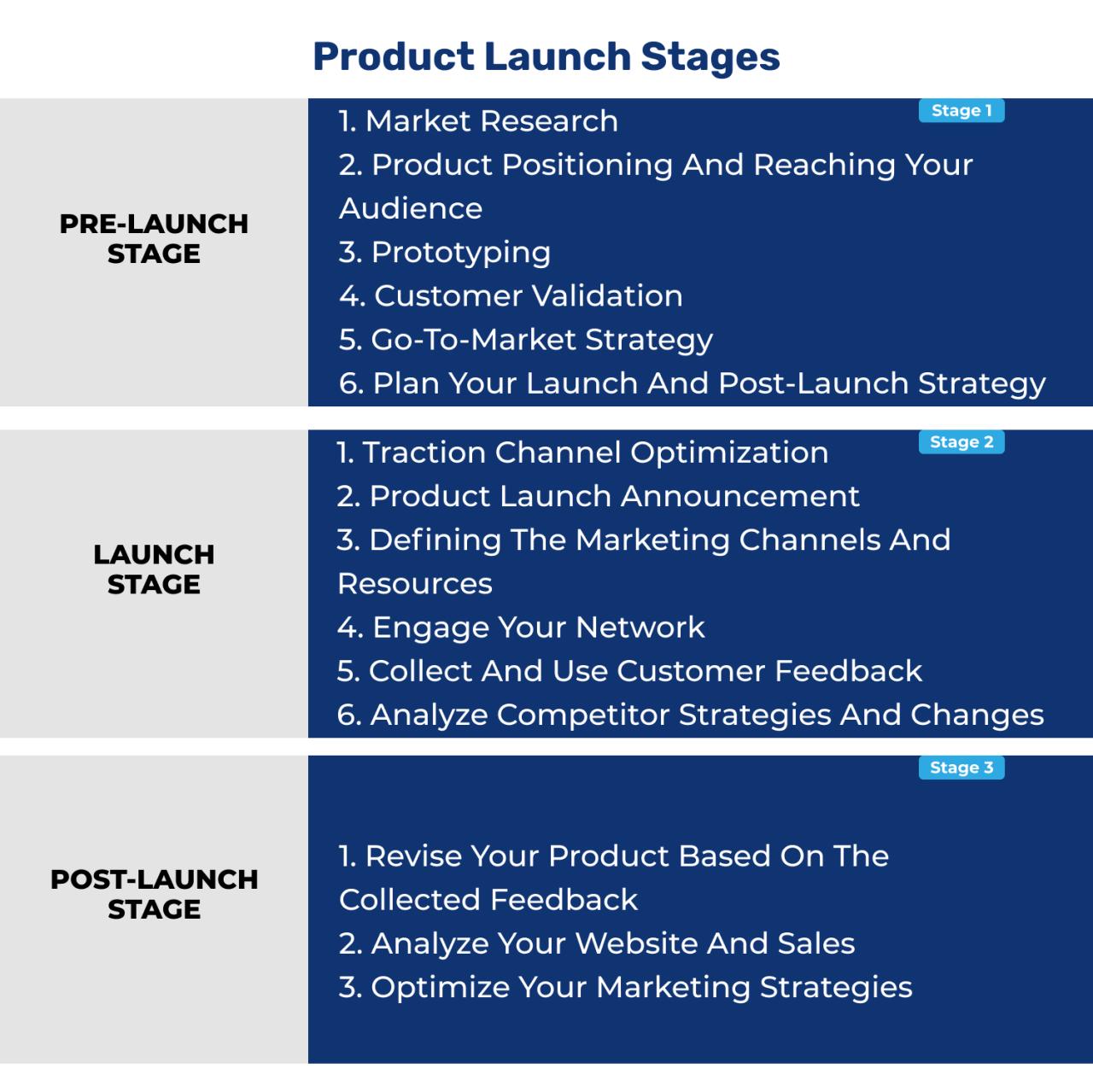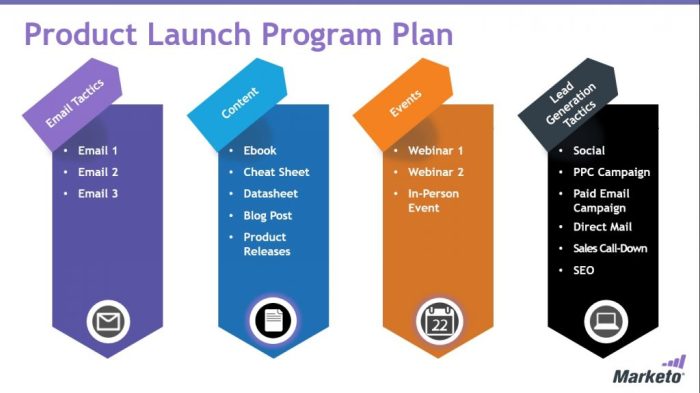Product Launch Strategies are the key to unlocking business success, paving the way for brands to shine in the competitive market. Dive into the world of effective strategies that elevate product launches to new heights.
Introduction to Product Launch Strategies
Product launch strategies refer to the detailed plan and approach that a business uses to introduce a new product or service to the market. It involves various marketing tactics, communication strategies, and promotional activities aimed at creating buzz and generating interest among potential customers.
Having a well-thought-out product launch strategy is crucial for the success of a new product. It sets the tone for how the product will be perceived by the target audience, establishes the brand’s positioning in the market, and ultimately determines the initial sales performance of the product.
Importance of a Well-Executed Product Launch Strategy
- Creates anticipation and excitement among consumers
- Builds brand awareness and credibility
- Generates initial sales momentum
- Sets the stage for long-term success and growth
Impact of a Successful Product Launch Strategy on Brand Success
- Enhances brand reputation and visibility
- Establishes a loyal customer base
- Drives revenue growth and market share expansion
- Positions the brand as a market leader or innovator
Types of Product Launch Strategies

When it comes to launching a new product, there are various strategies that companies can utilize to make a big impact in the market. Each strategy has its own advantages and disadvantages, depending on the product and target audience.
Staggered Launch
A staggered launch involves introducing a product in phases, starting with a limited release before expanding to a wider audience. This allows companies to generate buzz and demand for the product over time.
- Example: Apple often uses a staggered launch strategy for their new iPhones, releasing the product first in select countries before rolling it out globally.
- Effectiveness: Staggered launches can create anticipation and build excitement among consumers, leading to higher demand for the product.
Exclusive Launch
An exclusive launch involves offering a product to a select group of customers before making it available to the general public. This creates a sense of exclusivity and can help generate buzz around the product.
- Example: Fashion brands like Supreme frequently use exclusive launches to create hype around their limited edition collections.
- Effectiveness: Exclusive launches can create a sense of urgency and desirability among consumers, driving up demand for the product.
Simultaneous Launch
A simultaneous launch involves releasing a product to all markets at the same time. This approach is often used for products that have a broad appeal and are expected to perform well across different demographics.
- Example: Fast food chains like McDonald’s often use simultaneous launches for new menu items, making them available in all locations on the same day.
- Effectiveness: Simultaneous launches can reach a wide audience quickly and efficiently, maximizing the product’s visibility and sales potential.
Pre-Launch Phase
In the pre-launch phase of a product, it is crucial to set the stage for a successful launch by taking certain key steps.
Market Research Process
Market research is a vital component of preparing for a product launch. This process involves gathering and analyzing information about the target market, competitors, and consumer trends to ensure that the product meets the needs and preferences of the customers.
- Conduct surveys, focus groups, and interviews to gather insights from potential customers.
- Analyze market trends, competitor strategies, and consumer behavior to identify opportunities and challenges.
- Use data analytics tools to track and measure market demand, pricing trends, and customer feedback.
Setting Clear Goals and Objectives
Setting clear goals and objectives during the pre-launch phase is essential for guiding the product development process and measuring the success of the launch.
- Define specific, measurable, achievable, relevant, and time-bound (SMART) goals for the product launch.
- Establish key performance indicators (KPIs) to track the progress and effectiveness of the launch strategy.
- Create a timeline with milestones and deadlines to ensure that the launch stays on track and meets its objectives.
Launch Execution

When it comes to executing a successful product launch event, there are several key components to consider. From generating excitement to leveraging various marketing channels, each aspect plays a crucial role in the overall success of the launch.
Key Components of a Successful Product Launch Event, Product Launch Strategies
- Identifying the target audience and tailoring the messaging to resonate with them.
- Creating engaging and visually appealing marketing materials, including videos, social media posts, and email campaigns.
- Collaborating with influencers or industry experts to help spread the word and build credibility.
- Offering incentives or exclusive perks to early adopters to encourage pre-orders or purchases.
- Hosting a launch event or webinar to showcase the product in action and answer any questions from potential customers.
Creating Buzz and Excitement
- Tease the product through sneak peeks and behind-the-scenes content to pique interest and curiosity.
- Utilize social media platforms to create a countdown leading up to the launch date, building anticipation among followers.
- Encourage user-generated content by running contests or challenges related to the new product.
- Partner with other brands or influencers for cross-promotion and wider reach.
Role of Marketing Channels and Platforms
- Utilize email marketing campaigns to reach out to existing customers and subscribers with exclusive offers or early access.
- Engage with potential customers through social media platforms like Instagram, Facebook, and Twitter to share product updates and connect with the audience.
- Consider running targeted ads on platforms like Google Ads or Facebook Ads to reach a broader audience and drive traffic to your product page.
- Optimize your website for conversions and ensure a seamless user experience for visitors interested in learning more about the new product.
Post-Launch Evaluation
After a product launch, it’s crucial to evaluate the success of the strategy to determine what worked well and what could be improved for future launches. Post-launch evaluation allows businesses to gather valuable insights and feedback from customers, helping them make informed decisions moving forward.
Methods for Evaluating Success
- Conduct surveys and interviews with customers to gather feedback on their experience with the product.
- Analyze sales data to see if the product met revenue targets and compare it to initial projections.
- Monitor social media and online reviews to gauge customer sentiment and identify any issues or areas of improvement.
- Assess key performance indicators (KPIs) related to the product launch, such as website traffic, conversion rates, and customer engagement.
Importance of Gathering Customer Feedback
Customer feedback post-launch provides valuable insights into how the product is being received in the market. It helps businesses understand customer preferences, identify areas for improvement, and make data-driven decisions to enhance future product offerings. By listening to customer feedback, companies can build stronger relationships with their audience and increase customer loyalty.
Iterating and Improving Future Strategies
Based on post-launch evaluations, businesses can iterate and improve their future product launch strategies by:
- Implementing changes based on customer feedback to address any issues or concerns raised.
- Adjusting marketing tactics and messaging to better resonate with the target audience.
- Refining the product based on performance data and customer insights to meet evolving market demands.
- Testing new strategies and approaches to continuously optimize the product launch process.